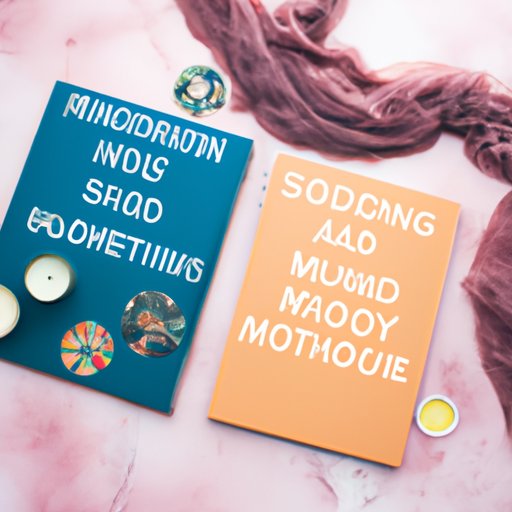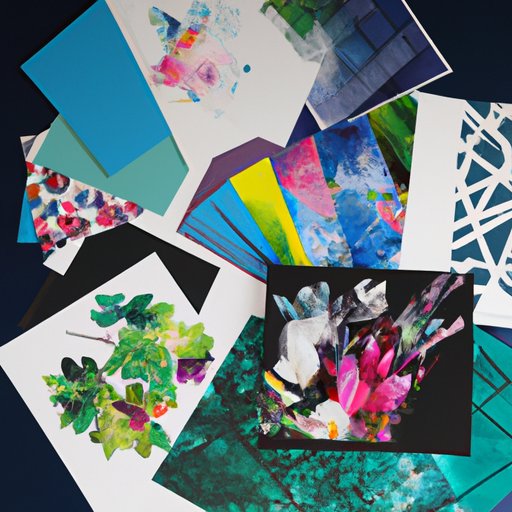Introduction
Have you ever had a creative project in mind but feel lost when it comes to translating those ideas into a final design? This is where the magic of mood boards come in! A mood board is a visual tool that allows you to organize and communicate your ideas, creating a clear and cohesive vision for your project. In this article, we will take a deep dive into what mood boards are, why they are important for designers and creatives, and how to create them effectively.

The Ultimate Guide to Understanding Mood Boards
Mood boards have been used for decades by designers, advertisers, and creatives to collect and organize visual inspiration. The history of mood boards can be traced back to early 20th-century fashion designers who used them to communicate their designs to clients. Today, mood boards have evolved into a more sophisticated tool that can be used for a variety of creative projects.
There are a few common misconceptions about mood boards, including that they are only useful for visual designers or are just a bunch of pretty pictures thrown together. However, mood boards can be used by anyone looking to communicate ideas or gather inspiration in a visually appealing way.
There are several different types of mood boards, including digital or physical formats, and they can be used for a variety of purposes such as branding, website design, or interior design. Knowing which type of mood board to use for your project is important to ensure its effectiveness.
Creating an effective mood board requires careful consideration and attention to detail. Some tips for creating an effective mood board include defining the purpose, gathering inspiration, and focusing on selecting elements with a cohesive look and feel.
Why Mood Boards Are Essential for Every Designer
Mood boards are an essential tool for every designer, no matter their level of experience. Mood boards are useful for several reasons, such as helping to convey ideas and concepts to clients or team members. They can also be used to keep creative projects organized, allowing you to identify and focus on specific themes or directions for your project.
Mood boards can also be used for collaboration among team members. Design projects often require input from several people, and a mood board can provide a clear and concise visual reference for everyone to work from, ensuring everyone is on the same page.
Real-world examples of successful design projects that have used mood boards include the branding for Airbnb and Pinterest. Both companies used mood boards to develop a cohesive visual identity that effectively communicates what their platforms stand for.
5 Simple Steps to Creating a Professional Mood Board
Creating a mood board may seem daunting, but it can actually be a straightforward process with the right guidance. Here are five steps to follow when creating a mood board:
- Define the purpose and theme of your mood board
- Gather visual inspiration from a variety of sources
- Select and organize visual elements in a cohesive way
- Design your mood board and add any necessary text or graphics
- Revisit and update your mood board as necessary to ensure its effectiveness
It’s also important to consider tools and resources that can assist in creating a professional-looking mood board. There are many digital tools available, such as Canva and Pinterest, that can help you create a virtual mood board that is easy to share with others.
Mood Boards: The Secret for Effective Branding
One of the most popular applications of mood boards is in branding and marketing. Mood boards can help you establish a clear visual identity for your brand, ensuring that all messaging is consistent and aligned with your brand’s values and vision.
One example of a brand that utilized mood boards for its successful branding is Nike. The company created a visual mood board that included images of athletes, sports equipment, and inspiring quotes, resulting in a visually cohesive brand identity that effectively conveys its message of performance and excellence.
To create a mood board that aligns with your brand’s vision and values, it’s important to consider the emotions and feelings you want to evoke with your brand. The mood board should reflect the tone and messaging that your brand represents.
Maximizing Your Creativity with Mood Boards
Mood boards are not only useful for organizing and communicating ideas, but they can also be used as a tool for sparking creativity. By gathering a variety of visual inspiration and playing around with different colours, fonts, and graphics, you can open up new possibilities and ideas for your project.
One technique for using mood boards as a visual brainstorming tool is to create multiple mood boards that explore different themes or directions for the project. Seeing the visual elements side-by-side can help you identify similarities and disparities, and create a more refined and cohesive final product.
It’s also beneficial to revisit and update your mood boards as your project progresses. This helps you stay inspired and fresh, and may even lead you in a new and exciting direction that you wouldn’t have considered before.
How Mood Boards Can Help You Achieve Your Design Goals
If you’re working on a design project, it’s important to set realistic goals for yourself and your team. Mood boards can help you stay focused and organized as you work towards these goals. They serve as a visual roadmap for your project, allowing you to identify key themes and elements that you want to convey through your design.
By maintaining a clear vision of what you want to achieve with your project, you can ensure that all designs reflect this vision. This can save you time, money, and frustration in the long run, as you won’t have to worry about redoing designs that are not effective or aligned with the vision.
Several successful designers have attributed their success to the use of mood boards, including Steve Jobs and Coco Chanel. Mood boards helped these designers to stay focused on their objectives and create designs that effectively communicated their message.
Conclusion
In conclusion, mood boards are an essential tool for any creative project. They serve as a visual reference that allows you to organize and communicate your ideas effectively, while also providing a source of inspiration and creativity. With the right tips, tools, and resources, anyone can create a professional-looking mood board that aligns with their project’s vision and goals.
